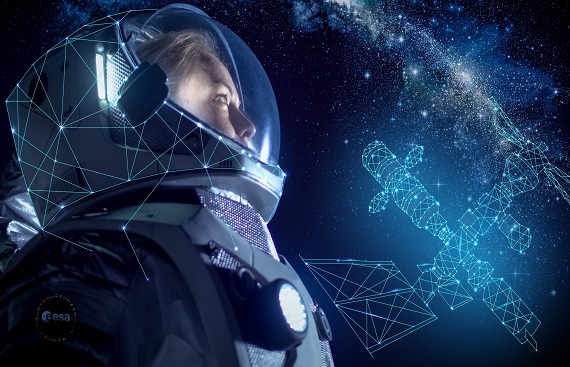Future of Space Exploration with Cutting-Edge Technology

Ladies and gentlemen, astronauts and alien enthusiasts prepare to embark on the scientific expedition of a lifetime! Picture this: as we venture into the vastness of space, we're armed with more advanced technology than a spaceship piloted by Tony Stark himself. From cutting-edge propulsion systems to revolutionary scientific instruments, these advancements propel us further into the cosmos, unlocking secrets and expanding our understanding of the universe. This article delves into the remarkable ways advanced technology revolutionizes space exploration and paves the path for extraordinary discoveries. Neil Armstrong may have taken one small step for man, but we'll take one giant leap for intergalactic technology. So fasten your seatbelts, folks, and prepare for a cosmic adventure.
Electric Propulsion: Harnessing the Power of Ions
A new star has emerged in space exploration's vast and zany realm, where traditional rocketry was so last millennium. Enter the electric propulsion, a game-changing technology that utilizes the acceleration of charged particles, or ions, to propel spacecraft. By ionizing a fuel and then using electric fields to accelerate the ions, these engines provide a gentle, continuous thrust that can be sustained over extended periods. These spacecraft engines achieve remarkable efficiency and speed. It's like having a cosmic jetpack strapped to our spaceships! With electric propulsion, we're no longer confined to the limitations of chemical rockets. We can explore the celestial wonders, observe distant galaxies, study cosmic phenomena, and unravel the universe's secrets. So, let's charge up those ions, buckle up for the ride, and prepare to witness the mind-blowing power of electric propulsion, propelling us to new frontiers of space exploration.
Observing the Cosmos: Next-Generation Telescopes
![]()
The exploration of space begins with observing celestial bodies from Earth. Advanced telescopes have revolutionized our understanding of the universe. From the Hubble Space Telescope launched in 1990 to the upcoming James Webb Space Telescope, these instruments capture stunning images, revealing secrets of the cosmos. And Ground-based telescopes like The Atacama Large Millimeter /submillimeter Array (ALMA), a radio telescope system in Chile which contributed to our knowledge of star formation, planets, and life's origins. Equipped with advanced optics and detectors, they unravel cosmic mysteries with precision. With these advanced marvels of technology, we can now zoom in on celestial bodies with such precision that we might catch an alien sneezing on a distant moon.
Spacecraft and Planetary Exploration
Advanced Technology has propelled our spacecraft beyond the boundaries of our planet, enabling us to explore distant worlds. The Mars rovers, such as Curiosity and Perseverance, equipped with state-of-the-art instruments and cameras, have ventured to the Red Planet provides valuable data about its geology, climate, and potential for sustaining life. These rovers have transformed our understanding of Mars and paved the way for future human missions. Moreover, space probes like Voyager 1 and 2 has embarked on extraordinary journeys, becoming the first human-made objects to reach interstellar space. These brave spacecraft decked out with more gadgets than your local superhero convention, set out on their interplanetary adventures with a mission to uncover the secrets of the universe and, of course, to take the best space selfies ever. These probes have also provided invaluable insights into the outer reaches of our solar system, revealing new information about the planets, moons, and other celestial bodies they encountered along their remarkable trajectories.
Artificial Intelligence: Enhancing Mission Efficiency
In space exploration, artificial intelligence (AI) is becoming increasingly important. AI enables robotic devices and rovers to autonomously navigate unknown terrains, identify and classify items, and make wise decisions. AI has been effectively applied by NASA's Mars rovers, including Curiosity and Perseverance, analyze photos, identify rocks and exciting features, and choose the best courses for exploration. This autonomous decision-making capability dramatically improves the effectiveness and productivity of these missions, enabling us to solve the riddles of far-off planets and moons. AI also transforms how we manage the enormous amounts of data produced during space research missions. Researchers may now find trends, discover novel phenomena, and unearth hidden knowledge that would have otherwise been challenging or time-consuming. Additionally, AI assists in spacecraft operations, optimizing mission planning and execution. It occasionally injects some entertaining proposals. "Captain, I suggest we take a detour to pick up some intergalactic pizza. After all, space exploration is best enjoyed on a full stomach!"
The Future of Space Exploration
![]()
The Future of space exploration will continue to be fueled by advanced technologies. The construction of next-generation observatories, including the James Webb Space Telescope (JWST), promise to reveal fresh perspectives on the early cosmos, exoplanets, and the hunt for extraterrestrial life. The JWST will transform our knowledge of the cosmos and alter our vision of the universe thanks to its improved capabilities and cutting-edge imaging equipment. Furthermore, the likelihood of crewed expeditions to Mars is growing. Humans can now go farther into the solar system thanks to developments in propulsion systems, life support systems, and habitat architecture. These innovations represent a significant advancement in our drive for space travel because they offer the possibility of establishing long-term human settlements on distant planets.
In Summary, as we strive for space exploration, advanced technology has been our trusted companion, propelling us further than ever. From humble telescopes to awe-inspiring spacecraft, our journey has been fueled by curiosity and determination. Advanced technology has liberated us from Earth's gravity, enabling us to reach distant planets and beyond. Looking ahead, advanced technology will drive us deeper into space's mysteries. With innovative propulsion, telescopes, and robots, our toolkit expands, broadening our horizons. Ultimately, it's not just about breakthroughs or advancements, but about the human spirit to explore, dream, and soar among the stars. So, let us remember that the sky is just the beginning, not the limit.
